Turning to Nature: Food for the Soul

With the pandemic limiting our activities and the news of the world making me want to tune it all out, I have found myself turning increasingly to nature. Throughout the fall and winter I’ve watched the bay and the marsh outside our windows, as well as nearby farmland and woods, as they changed almost daily. I’ve found comfort and joy in the landscape and the wildlife. It turns out that this was a good year to move to the country.
I had planned to write a post every two to four weeks. It has been… um… almost six months. I’m calling it pandemic procrastination. And now I don’t know where to start! All those photos of fall colour and winter snow seem a little out of place now that spring has sprung. So I’m going to send you to my web site (click here) where I’ve been adding photos regularly as an ongoing project. Please let me know what you think. And for today’s post, I’m jumping right into spring and sharing the latest from our corner of the world.
For a few weeks in February, we started to see wet patches on the ice and you could hear it groaning and creaking. Sunsets were suddenly reflected in water again.
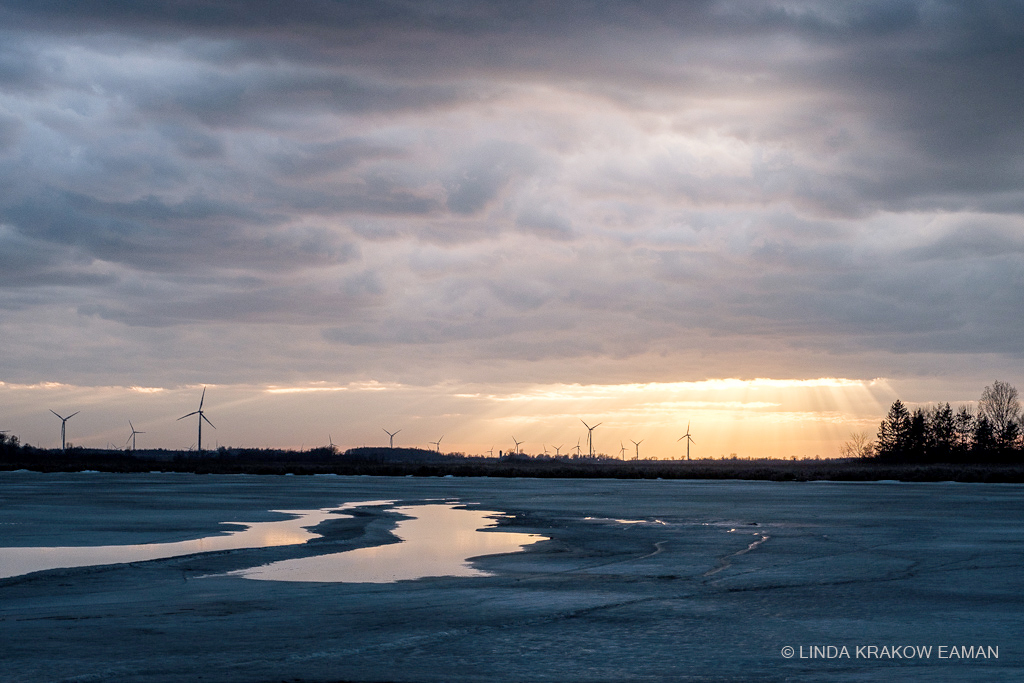
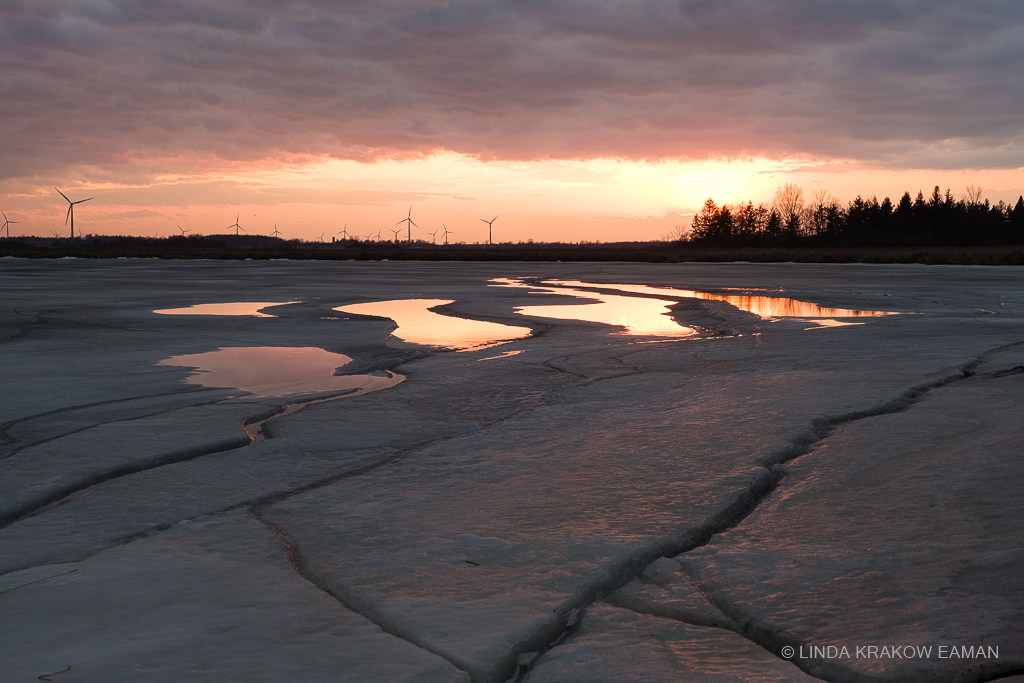
Then big pieces started pushing up against each other, creating incredible crystal formations.
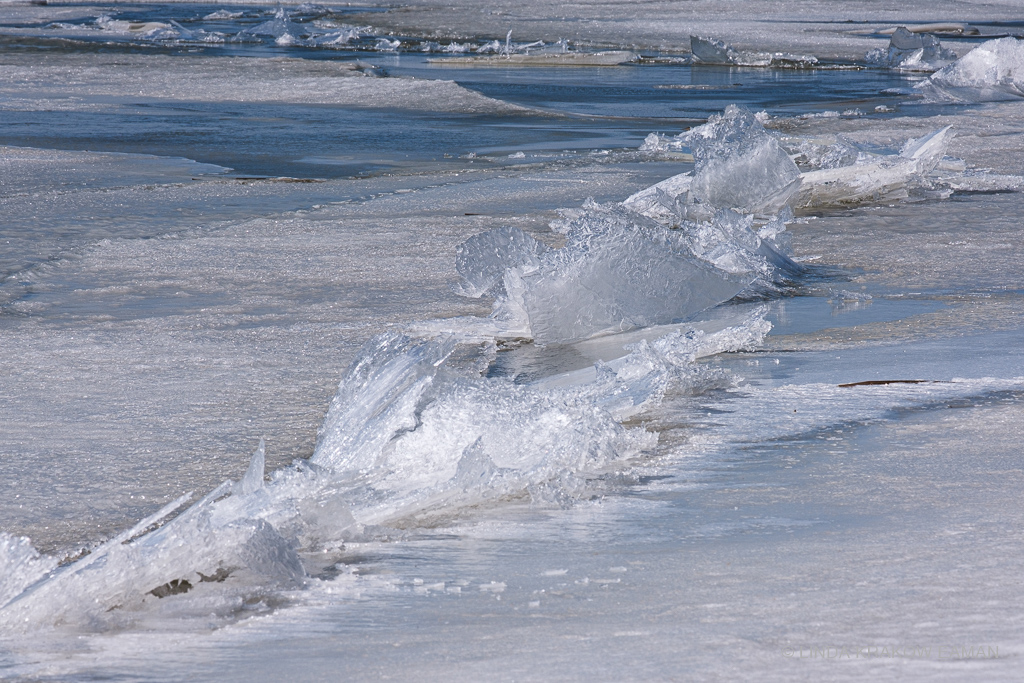
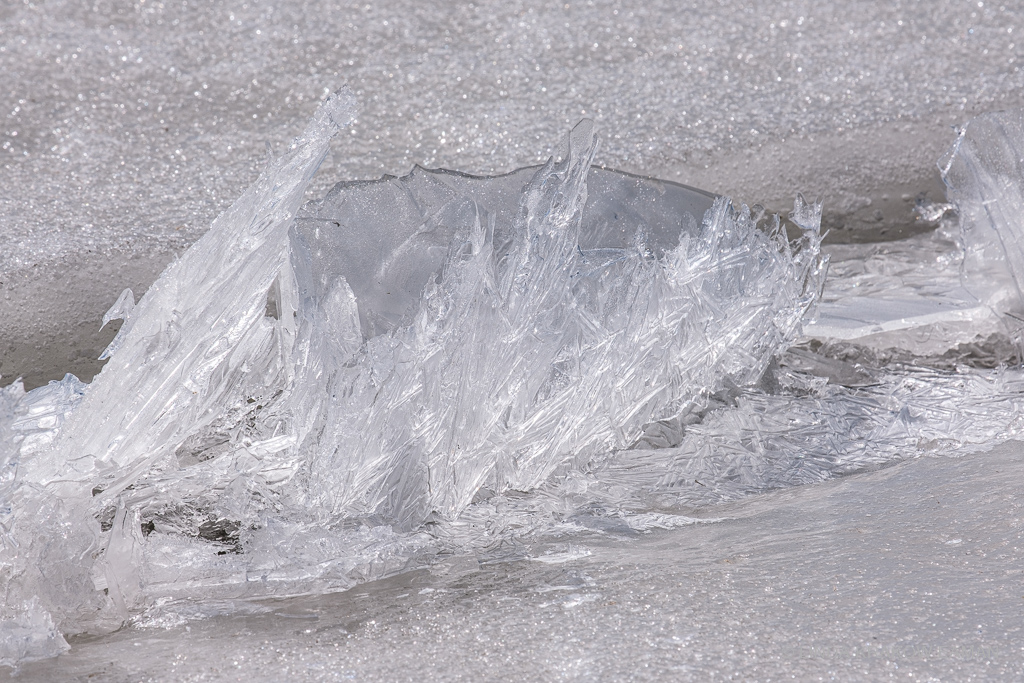
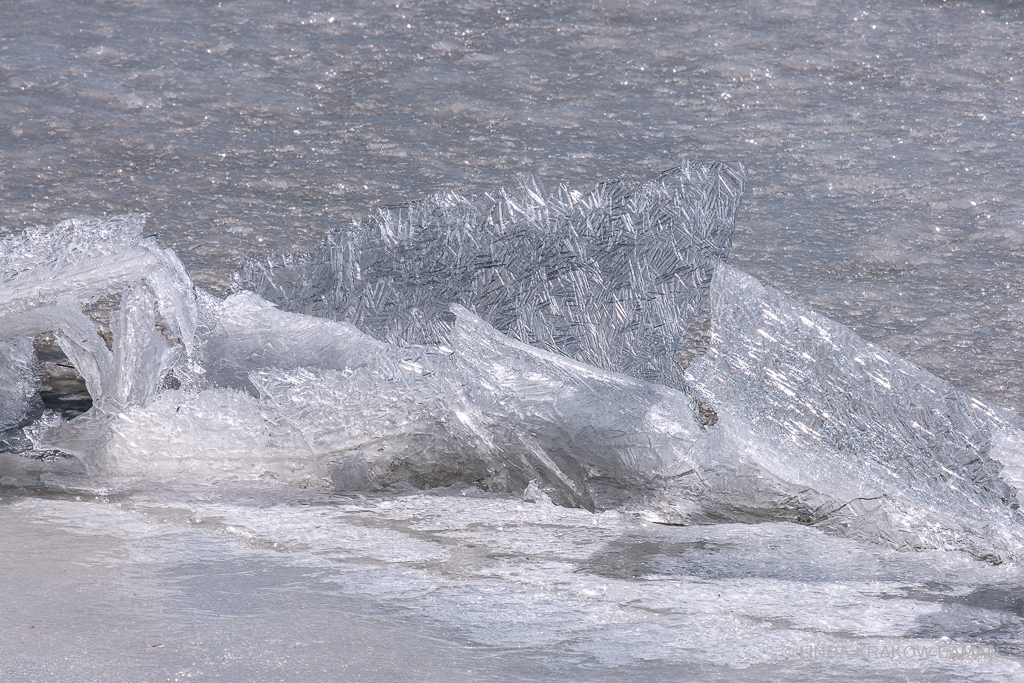
We hadn’t seen geese in our bay since it froze over. Many spent the winter in the corn and soybean fields, and I am guessing that others migrated south. But with the very first warm day in March, there were suddenly large flocks of fifty or more at a time flying noisily overhead, and the first few appeared on the bay, finding the steadily growing patches of water.
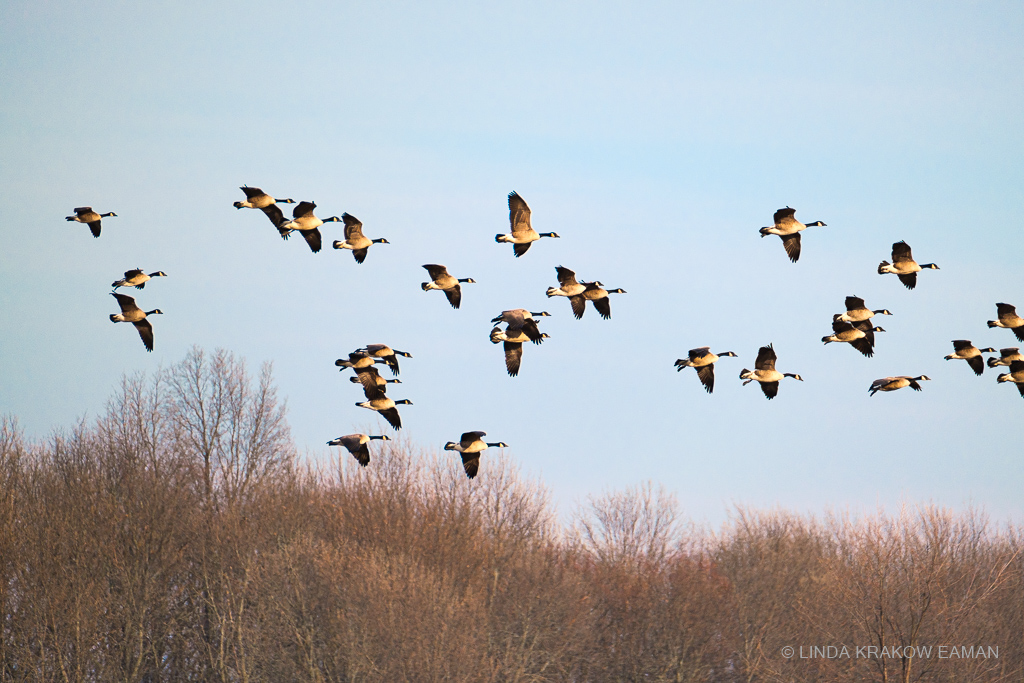
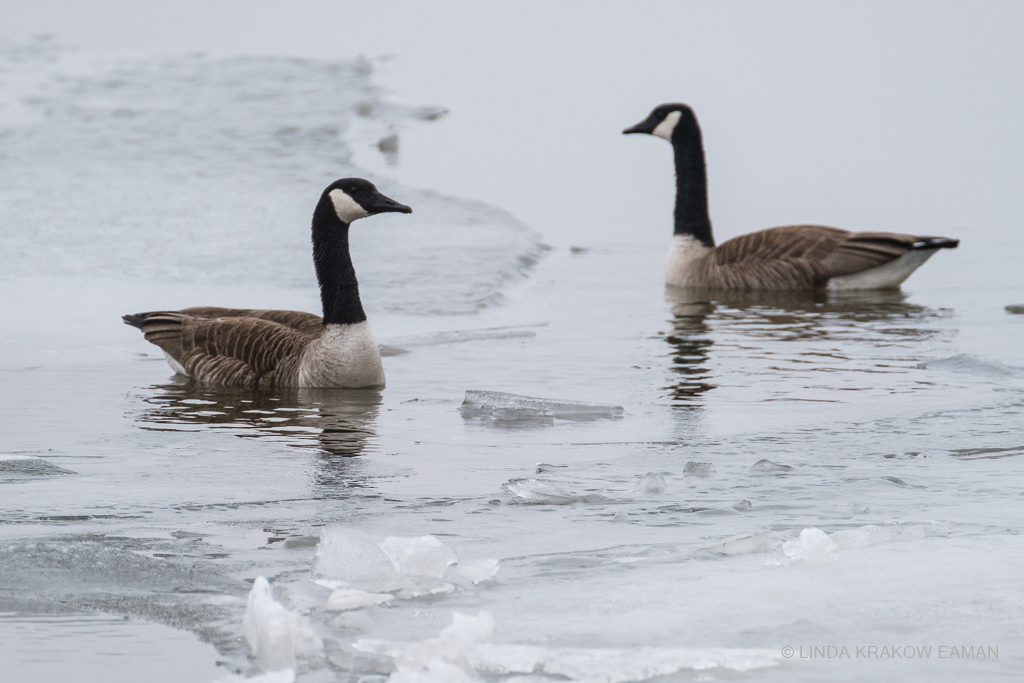
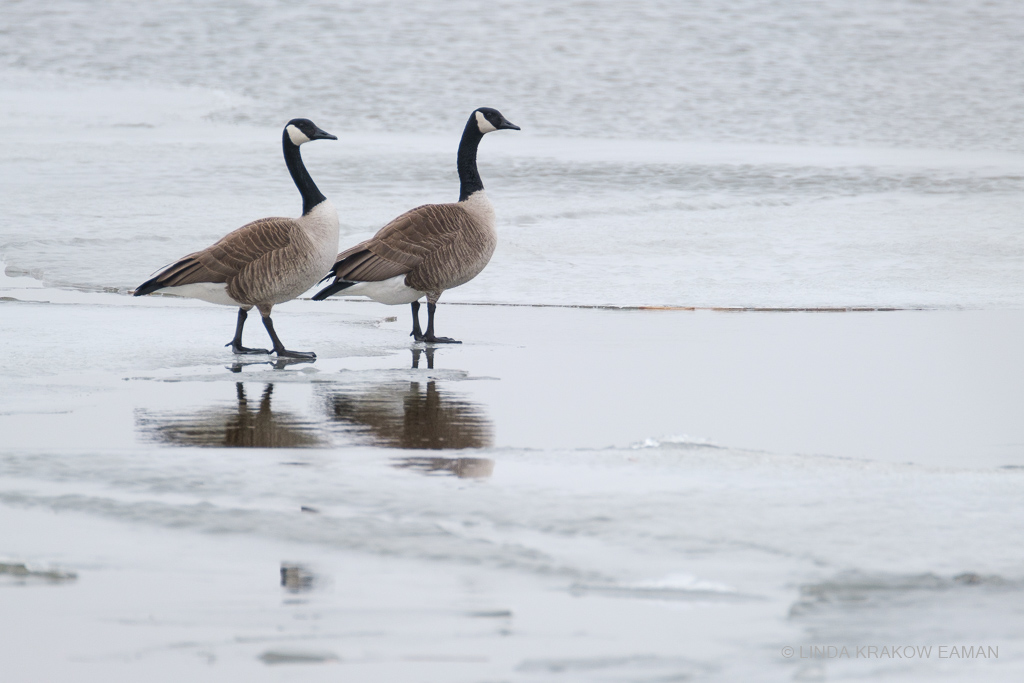
My raptor identification skills are still beginner level. But we’ve seen bald eagles on the ice (too far out for even a mediocre photo) so I’m guessing these three, a little closer in, might be juveniles.
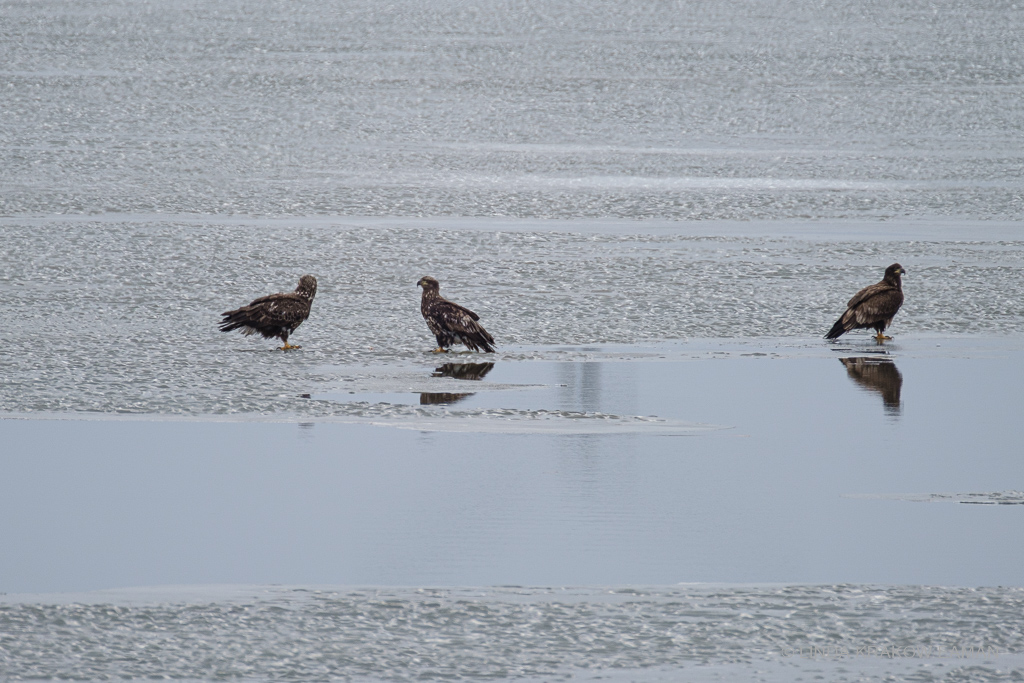
Coyotes used the ice as a highway throughout the winter; we’d usually see them in pairs. But with all the patches of slush and water now, this one had to carefully pick its way across and it stopped several times to ponder its next steps. It finally sped up (with relief, I think) as it neared the edge and the safety of the marsh. Within days, the ice was completely gone.
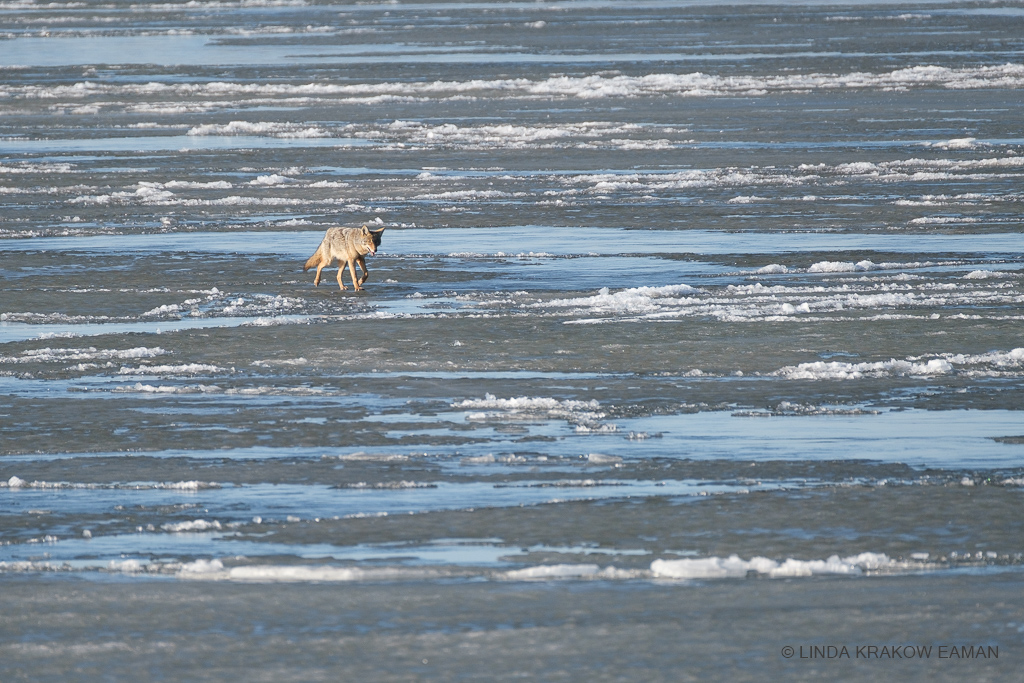
One day there were no red-winged blackbirds, and the next, they were everywhere! They perch on the bulrushes in the marsh, calling out especially in the early morning. I’m told that the females will join them soon.
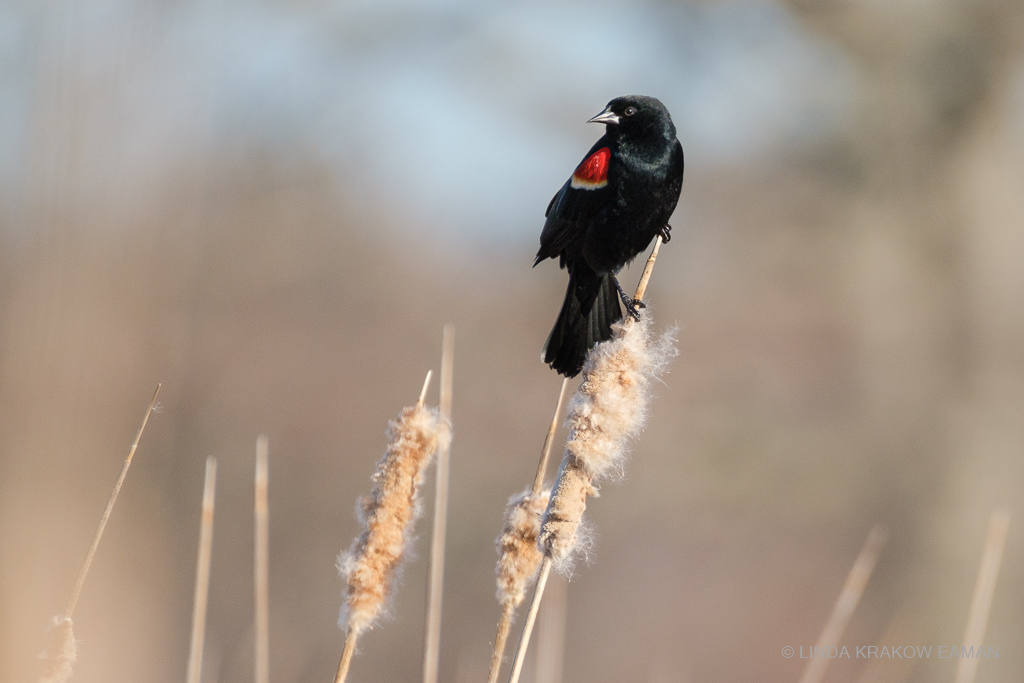
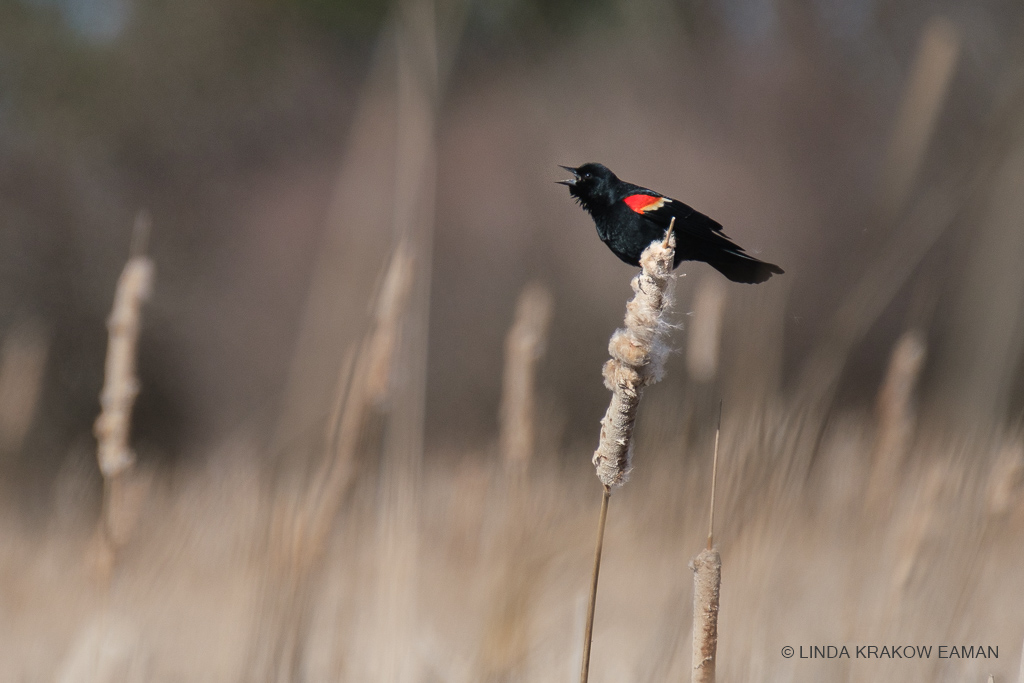
The blue herons have returned too, and spend hours fishing in the shallow water.
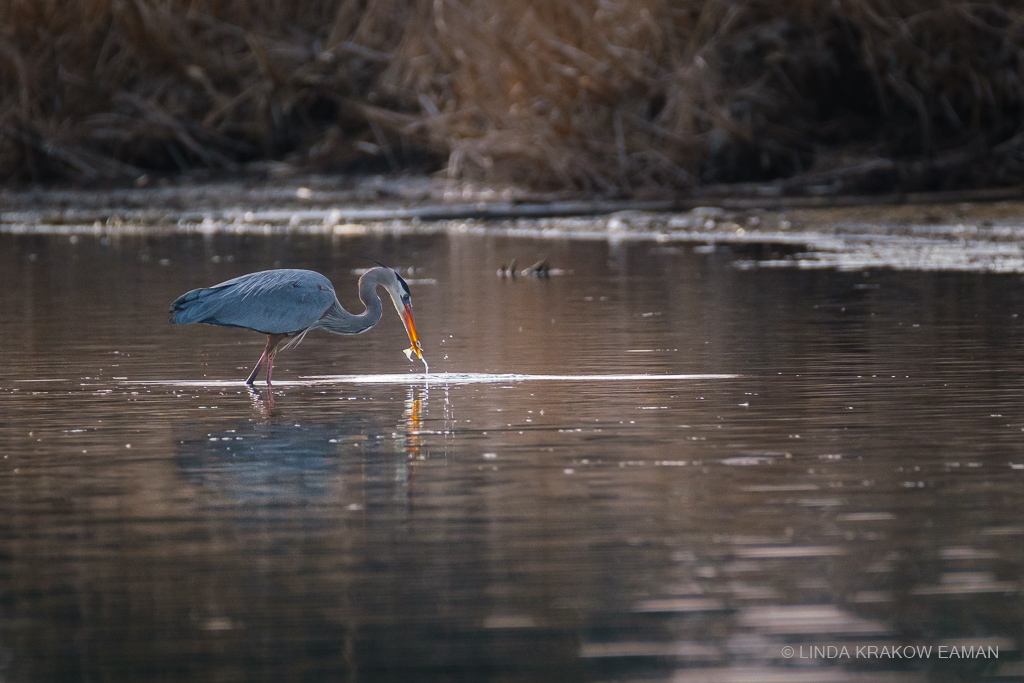
And finally, the swans. Many of them had been hanging out elsewhere around the island, where the water didn’t freeze. But on St. Patrick’s day the first few returned to the bay, finding the patches of water amidst the ice, and by the next day there was a group of fifty!
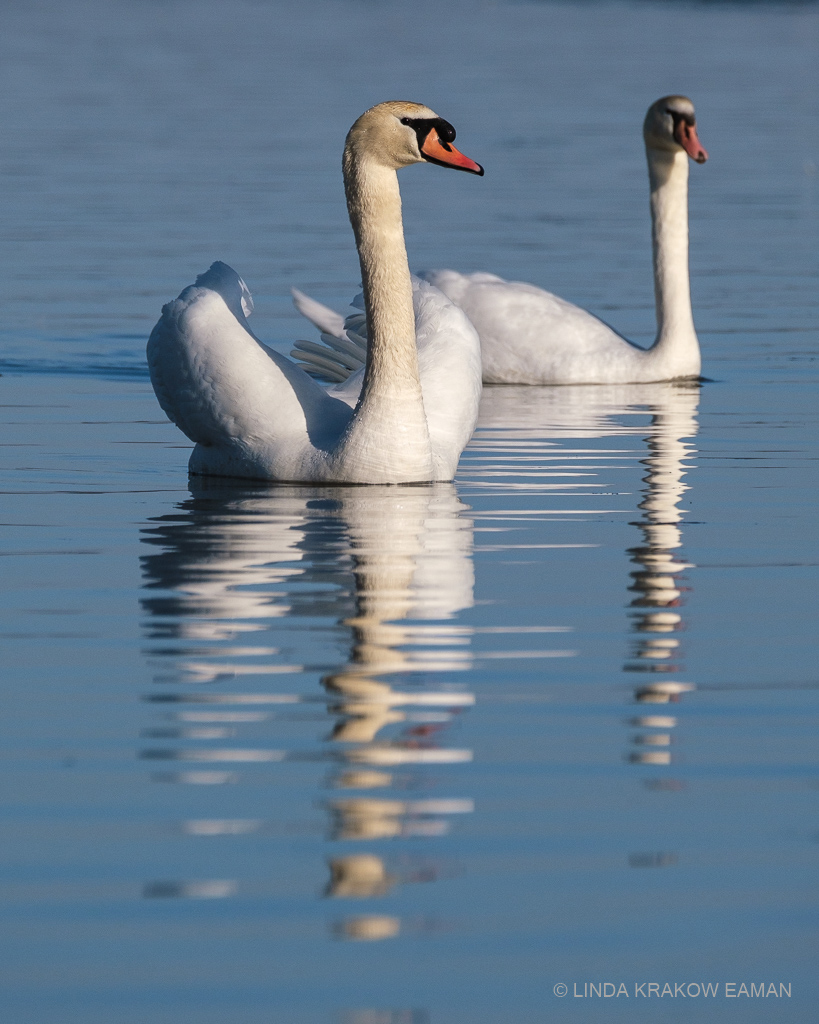
The black knob on the male mute swan gets larger during the mating season. They all spend a lot of time with their butts in the air and heads in the water, often coming up with mouths full of vegetation.
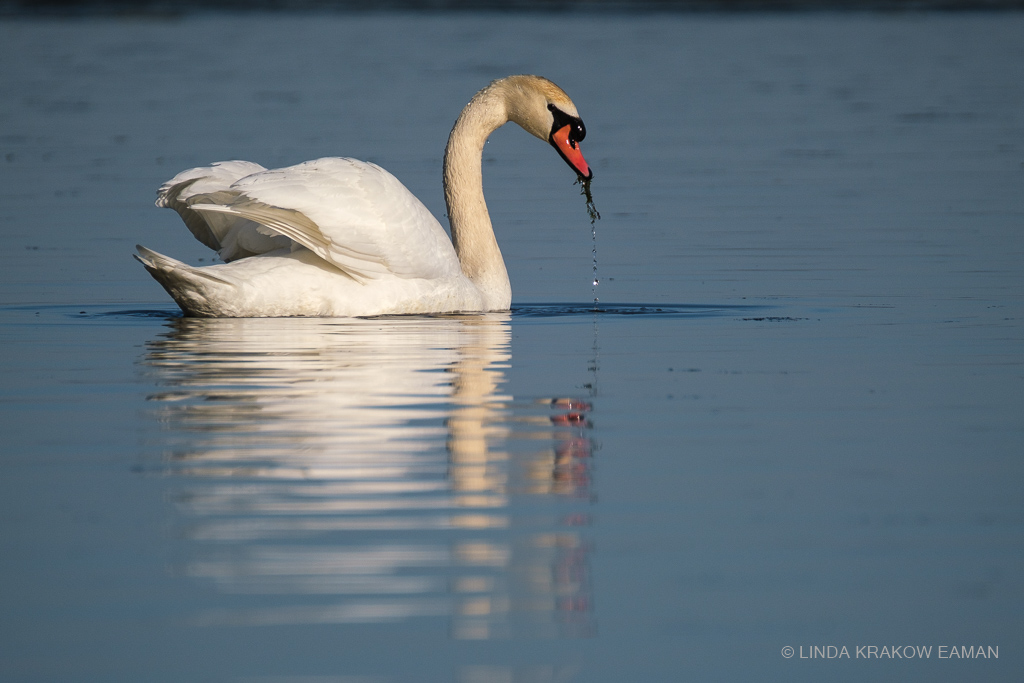
Love, like spring, is in the air! Swans do a wonderful courtship dance. First they dip their heads repeatedly into the water, then bob them up and down in a little bebop routine. Sometimes the female decides she isn’t impressed and swims off, but if not they’ll turn their heads one way and then the other, together, with their necks held close. Finally, they form this perfect heart!
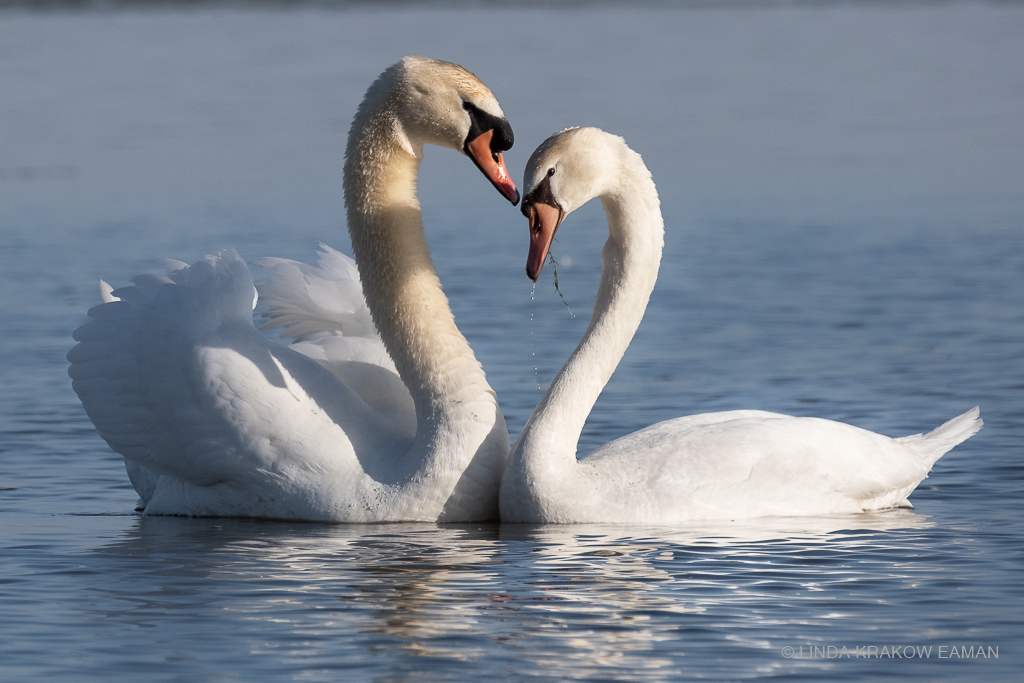
There are ducks now too, and songbirds, and this week tundra swans have joined the mute swans. I’ve acquired chest waders so I can sit comfortably in the mud and/or shallow water, and camouflage, and it’s warm enough for longer walks and even bike rides, so I think I might just push past that procrastination and post again soon. Until then, happy spring! What changes does March bring in your neck of the woods?
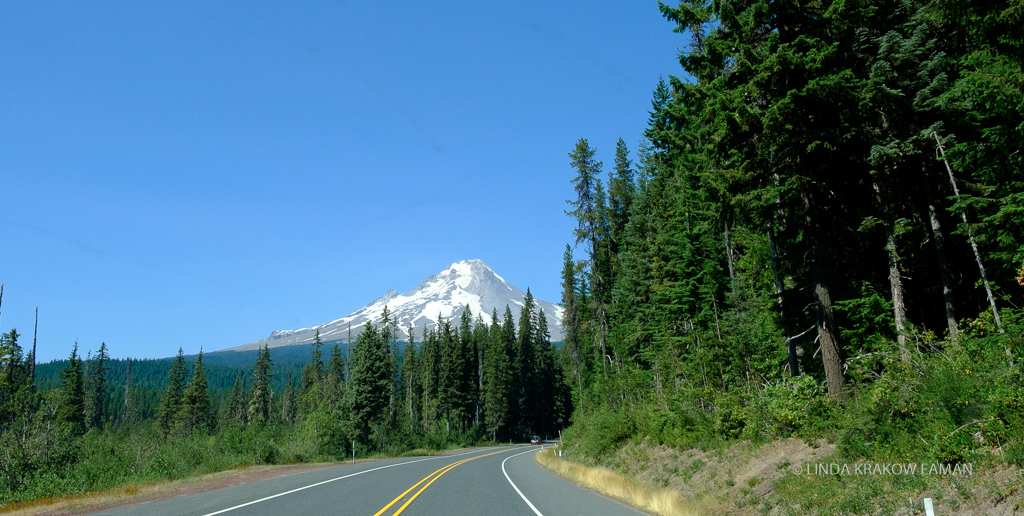
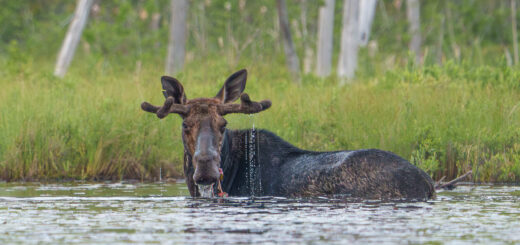
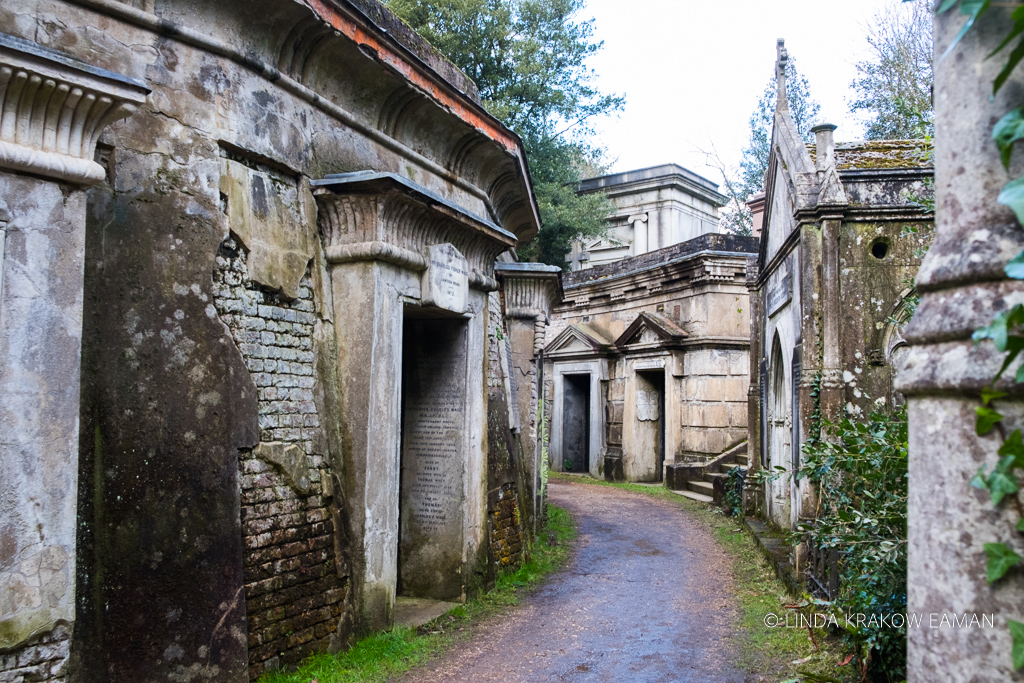
Gorgeous. Thanks for sharing the changes you’re seeing.
Thanks Mimi. Real seasons are not a bad trade for San Jose’s year round gorgeous weather!